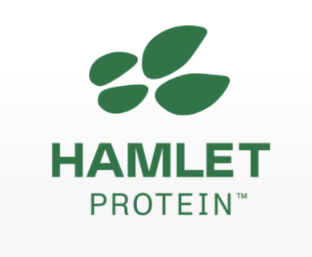



The future of animal nutrition includes clean feed
Clean feed is defined by high-quality ingredients that enhance not only nutrient composition and digestibility, but also long-term health and performance. By focusing on quality, clean diets provide these benefits, reducing the need for excessive and expensive additives like antibiotic growth promoters. To put it simply, less is more.When talking about clean feed, one of the most important topics is gut health. A healthy gut can lead to healthier animals, and ultimately, an improved return on investment (ROI).
Gut Health
Clean feed is a major factor influencing the development of a healthy gut in young animals. Low-quality feed ingredients promote inflammation through pro-inflammatory cytokines and the proliferation of pathogenic bacteria leading to nutritional disorders, negatively impacting growth.
Many feed ingredients contain anti-nutritional factors (ANF) like non-starch polysaccharides, beta-conglycinin, high aromatic amino acids, oxidized lipids, and gluten prolamins, all of which promote gut inflammation. In response to gut inflammation, expression of pro-inflammatory cytokines increases followed by an oxidative stress response which leads to increased apoptosis and further upregulation of pro-inflammatory cytokines. If the response to inflammatory compounds in feed ingredients continues, the vicious circle will continue as well, leading to chronic inflammation, lowering ROI.
The gut microbiome is heavily influenced by the composition of feed consumed by young animals. Feed ingredients can promote the proliferation of symbiotic bacteria or pathogenic bacteria. Feed ingredients containing ANFs will shift the gut microbiome from symbiotic to pathogenic bacteria, promoting infectious inflammations. By shifting the microbiome towards pathogenic bacteria and continuing to feed ingredients with ANFs, it allows for bacterial fermentation which can increase the risk of diarrhea and nutrition-related diseases.
An example of an ANF are trypsin inhibitors (TI) in soybean meal (SBM). High TI are one of the greatest factors decreasing the quality of SBM fed to monogastric animals, subsequently impacting feed digestibility and increasing gut inflammation. When pigs were fed a diet of 38% SBM with 8.78 mg/g of TI, amino acid digestibility decreased by 13-26% while digestibility of crude protein was reduced by 23.3% (Chen et al., 2020). A similar trend has been shown in broiler chickens in which high TI reduces protein digestibility, decreasing body weight gain and increasing feed conversion ratio (FCR) (Rada et al., 2017).
This is true in the case of ruminants, as well. One of the leading causes of calf death is enteric infection. Improving calf gut health mitigates the risk of developing enteric infections while improving the immune system and overall health of the animals. There is also evidence to suggest that alteration of the microbiome at a young age leads to improved milk production (Steele et al., 2016; Dill-McFarland et al., 2017).
Evidently, keeping it simple with the use of clean ingredients promotes the development of a healthy gut leading to many additional benefits like reduced intervention and a greater return on investment. This is important for setting young animals up for success from the start, supporting their long-term health and performance.
Clean Feed Enhances Growing Conditions
Ensuring gut health through clean feed ingredients can lead to improvements in overall health, reducing the need for intervention through management practices. Establishing a healthy gut through clean feed decreases the incidence of diarrhea, reduces oxidative stress, and can diminish the need for antibiotics. Responses to these forms of stress also require a great deal of energy to activate the immune response. This results in energy from the feed being put towards the immune response, rather than towards growth. Feeding clean feed ingredients support health while fostering perfect growing conditions.
Improved ROI
Enhancing immunity and overall health of young animals can translate to an improved return on investment (ROI). Feeding ingredients with lower ANF early on in life reduces gut inflammation and oxidative stress while supporting development of a healthy immune system and leading to lower FCRs and therefore higher ROI. A reduced need for management interventions can also reduce the cost of production as less labor is needed and less will be spent on antibiotics/AGPs or other medications. While AGPs are forbidden in Europe, they are still used around the world, but with clean diets AGPs become redundant and unnecessary, further improving ROI. Clean feed creates value both in terms of animal health and financials.
The Hamlet Protein Difference
Hamlet Protein produces clean soy-based feed ingredients for young animals with significantly lower ANFs compared to conventional SBM. The patented production process is gentle and uses an enzymatic treatment to reduce the levels of the most harmful ANFs without damaging the protein or the amino acids. The process is monitored very closely, making sure customers receive the exact same high quality every time.
Feeding Hamlet Protein products in the starter diet of young animals has been shown to enhance nutrient absorption, increase body weight gain, decrease FCR, all while reducing the incidence of metabolic disease and need for treatment. The Hamlet Protein difference is providing young animal feed ingredients that aid in establishing a healthy gut to enhance performance and, ultimately, increase ROI.
| References | ||||
|---|---|---|---|---|
| Chen, J., Wedekind, K., Escobar, J., and Vazquez-Añón, M. 2020. Trypsin inhibitor and urease activity of soybean meal products from different countries and impact of trypsin inhibitor on ileal amino acid digestibility in pigs. J Am Oil Chem Soc. 97: 1151-1163. | ||||
| Dill-McFarland, K.A., Breaker, J.D. and Suen, G. 2017. Microbial succession in the gastrointestinal tract of dairy cows from 2 weeks to first lactation. Sci Rep. DOI: 10.1038/srep40864 | ||||








